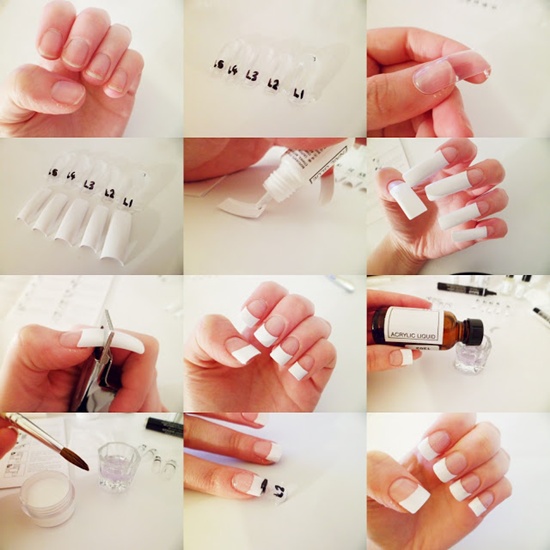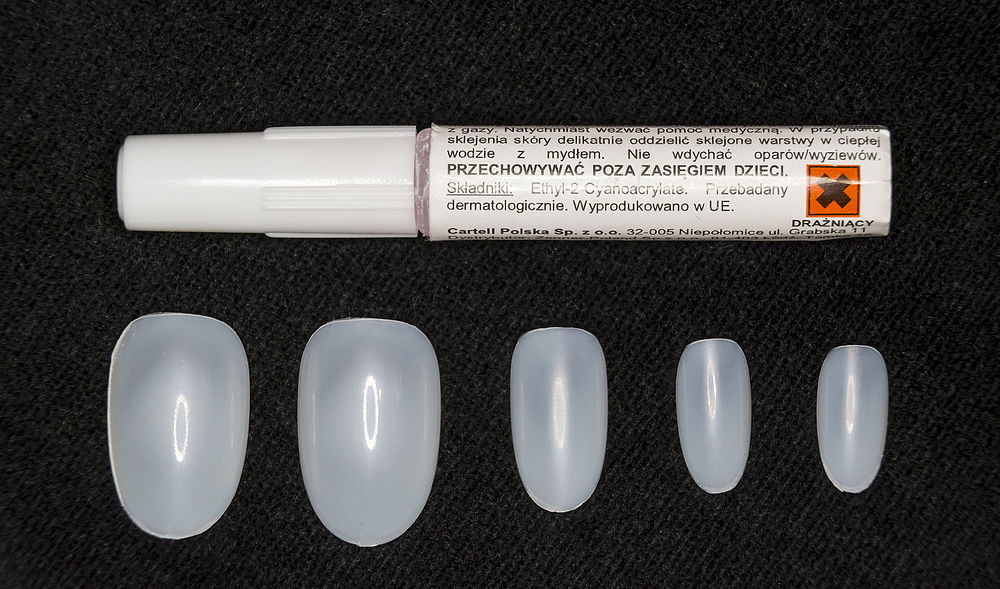ARTIFICIAL NAILS
IntroductionArtificial nails, also known as fake nails, false nails, fashion nails, nail enhancements, or nail extensions,are coverings placed over fingernails asfashion accessories. Some artificial nails attempt to mimic the appearance of real fingernails as closely as possible, while other designs may deliberately stray in appearance from real fingernails. Artificial nails are made from a wide variety of materials. | |
| Types | The artificial nails are not a replacement, but an extension for natural nails. There are two main approaches to creating artificial nails—tips and forms. Tips are made of lightweight plastic plates that are "nail"-shaped. They are glued on the end of the natural nail and acrylic is then applied over the entire nail. Tips are now available in many different colors and designs, ranging from simple colors such as yellow or blue to flamboyant designs such as animal prints and mixed metallic colors. Forms are fitted over the nail and then an artificial nail is molded out of acrylic and the form is removed and then properly shaped and buffed to a shine.  One popular material commonly called "Polymethyl methacrylate acrylics" is a mixture of a polymer powder and a liquid monomer (e.g. ethyl methacrylate). The mixture starts to harden in 20–30 seconds after application and continues to cure to final hardness typically within fifteen minutes. Powder and liquid acrylics can be removed by using a variety of solvents (usuallyacetone is used). Usually it takes 20 to 30 Another material, commonly called UV Top Coat hardens under ultraviolet light. Depending on brand these can show a broader variety of quality and properties (flexibility, strength, etc.) but may be more expensive. They generally cannot be removed by organic solvents, but only be removed by filing (or left to grow out with the natural nail). There are, however, a variety of soak off UV gels which can be quickly and easily removed using acetone.minutes to remove the nail while using a nail file to help take off each layer of the artificial nail.  Another popular alternative to acrylic or gel preparations are fiberglass or silk wraps. They are done by cutting pieces of actual fiberglass or silk fabric to fit on the surface of the nail or tip and then it is sealed down with a resin or glue. These are a possible alternative for those who are allergic to chemicals used in the acrylic or gel process. These sort of treatments are commonly used to protect the nails if they have been broken. The silk or fiberglass overlay acts as a false layer of nail and thus protects the nail plate from splitting or becoming damaged any further.  Other materials can be used, as well as combinations of them.There are also temporary, cheaper flexible tips that can be quickly glued at home without help from a professional. Acrylic nail powders are available in a variety of colours and can use "special effects" such as contours, sparkles and the very popular French manicure (pink or tan and white appearance). |